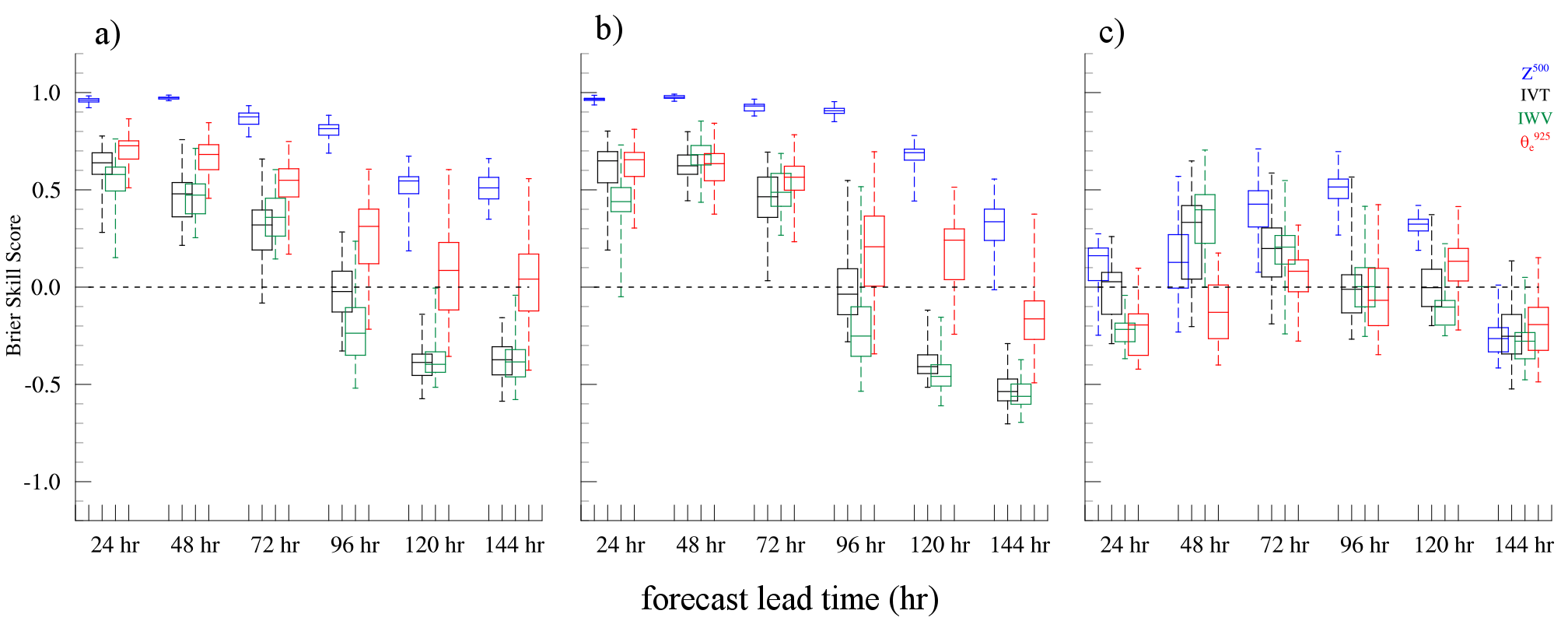CW3E Publication Notice
Evaluation of Atmospheric River Predictions by the WRF Model Using Aircraft and Regional Mesonet Observations of Orographic Precipitation and Its Forcing
April 16, 2018
CW3E project scientist Andrew Martin and co-authors have published a study characterizing predictability limits in Atmospheric River (AR) forecasts and apportioning Russian River precipitation forecast errors among vapor transport and orographic precipitation components. The article, titled Evaluation of Atmospheric River Predictions by the WRF Model Using Aircraft and Regional Mesonet Observations of Orographic Precipitation and its Forcing, is now in early online release at the Journal of Hydrometeorology.
This study leveraged airborne dropsonde observations of offshore Atmospheric Rivers completed during the CalWater experiment and the Atmospheric River Observatory at Bodega Bay and Cazadero, CA to verify forecasts of AR properties and their resulting precipitation. Forecasts were created by CW3E’s numerical weather prediction model, West-WRF, and compared to Global Forecast System reforecasts (GFSRe) valid for the same events. Forecast skill in AR properties and precipitation was evaluated at lead times up to 7 days ahead. Notably, the study found that deterministic skill in integrated vapor transport and other related fields degrades (meaning that forecasts created from climatology perform just as well or better) more than 4 days ahead for both models. However, West-WRF improves upon GFSRe skill in IVT at days 1, 2 and 3 ahead (see Fig. 1c).

Figure 1. a) Value added by GFSRe over GFSRe climatology validated against 145 CalWater dropsondes for the variables z500 (blue), IVT (black), IWV (green) and e925 (red). b) as in a, except for West-WRF value added over GFSRe climatology. c) as in b, except reference forecast is GFSRe.
The study also employed a novel forecast error separation technique to apportion precipitation forecast errors among the component caused by vapor transport simulation and orographic precipitation process simulation. Data from the Atmospheric River Observatory was used to demonstrate that West-WRF forecasts of orographic precipitation during landfalling AR are more accurate in simulating both components; but also that West-WRF forecasts of precipitation can be improved by improving the vapor transport component because its orographic precipitation process is accurate. This lends confidence that CW3E’s effort to improve west coast precipitation forecasts by assimilating offshore observations into West-WRF analyses can yield successful results.
Co-authors include Dr. F Martin Ralph, Reuben Demirdjian, Laurel DeHaan, and Dr. Rachel Weihs of CW3E with Dr. David Reynolds of the Cooperative Institute for Research in Environmental Sciences and Dr. Sam Iacobellis of Scripps Institution of Oceanography. The study was funded by the US Army Corps of Engineers, the California Department of Water Resources, and the National Science Foundation XSEDE program.
